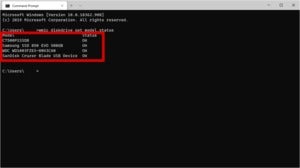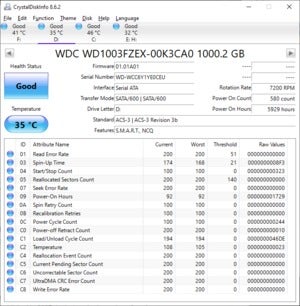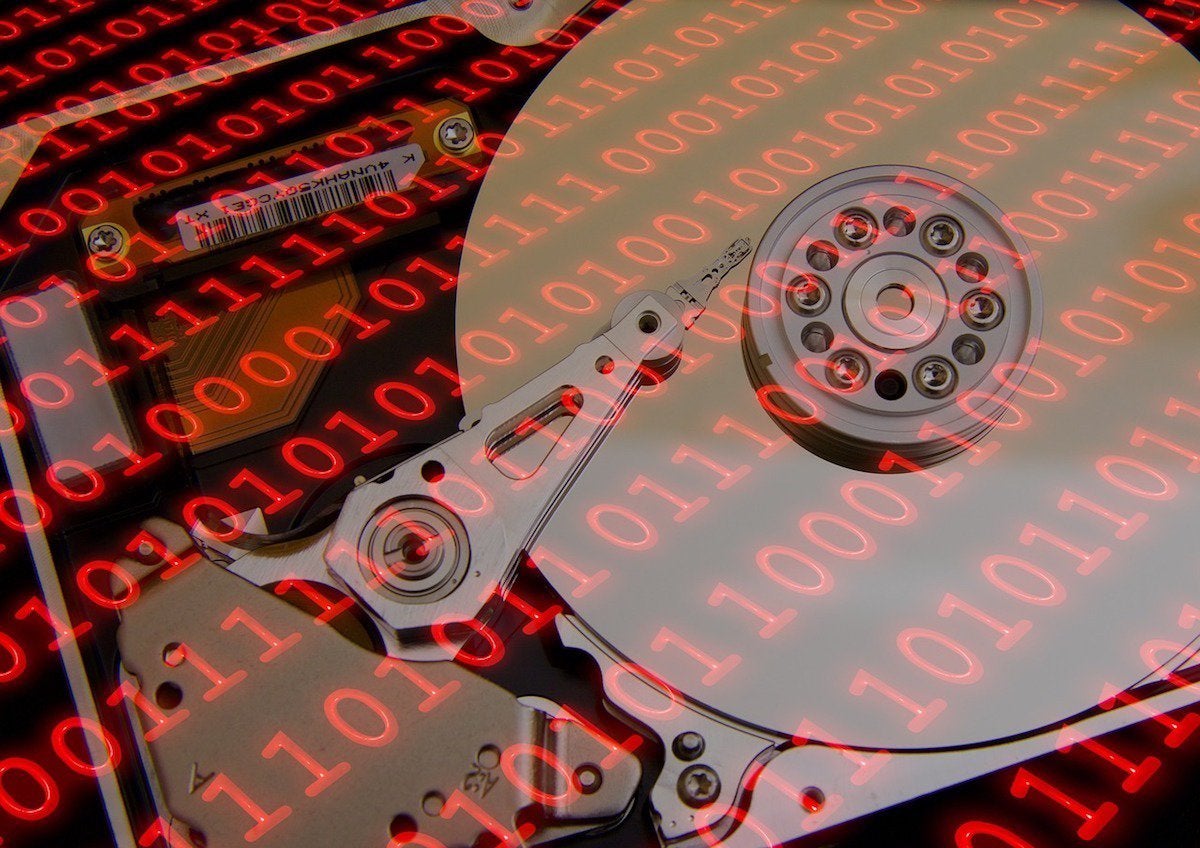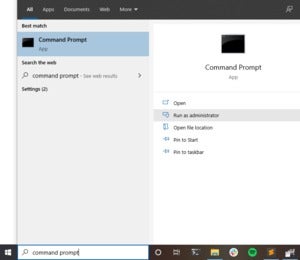How to check and monitor your hard drive's health - ruckerthoureprot
Of completely the PC components, few require to a greater extent care and attention than a Winchester drive. We've totally heard the admonishments to defragment drives, and tidy up rubble files to keep out all our 1s and 0s sparkling. No weigh how cured you care for it, however, at some point that drive is going to fail. Sometimes you hindquarters hear it coming, sometimes it happens dead in the middle of a design, and another times it just refuses to boot one morning.
Whatever direction your disk drive meets its cease, IT's a certainty you'll see it happen if you use a PC long sufficiency. Hard drives are complicated little devices. The primary quill components are the magnetic platters that contain the data, as well A the head that reads and writes the information.
Those heaving parts are the smashing benefit and big flaw of your hard drive. Extraordinary ill-timed pearl of a laptop computer, or a sudden move of a desktop tower, and the drive commode be irreparably damaged. Delay long enough, yet, and the drive will just fail on its own.
That's wherefore hard-boiled drives need closer monitoring than a solid nation drive, which has no moving parts. They expire too, but usually not under the same conditions. If you're thinking astir using an SSD as your primary boot drive, check retired our roundup of the scoop SSDs.
Patc you can't always predict when or how your hard labor will bite the disperse, you derriere take few steps to construe it climax.
Get SMART
The first tool for keeping tabs on a hard force is its Self-Monitoring, Analysis, and Reporting Applied science, or SMART, feature. This system is built into most forward-looking hard drives and SSDs, and it's planned to report when your drive is unsuccessful or encountering issues. Drive manufacturers can take their own approaches to SMART, merely they generally measure out similar operation points such as translate error rates, mechanical shock, ambitious disc temperature, seek time execution, and so on.
Most of the time the SMART arrangement works in the background, only you can bring up it to the fore in a number of ways.
The simplest way is to use the Windows command line utility program WMIC, which stands for Windows Direction Instrumentation Command-line (utility). This basic tool is a acuminate yay/nay health result supported the Intense statistics. Open a Windows statement prompt and enter the following: wmic diskdrive get model,status .
 IDG
IDG An exemplar of WMIC in action.
The results should look something similar the image present. It's preferable to invite the model as well as status so that you can determine more quickly which drive is unsuccessful if a problem is according. This is not such an issue for laptops, but IT's helpful for desktops with multiple drives.
CrystalDisk Info
If you'd like something with a little Thomas More detail so other option is to use CrystalDisk Info. CDI is a free desktop program that can display a lot of information about your disks, but the superlative area is probably enough for most people.
Hither, CDI displays a position for each drive victimization a colour-coding system: Good (blue), Caution (yellow), Bad (flushed), and Nameless (gray). Just about of the time you should hardly experience a Good status, but if you see one of the others it's metre to keep an eye on that drive.
 IDG
IDG CrystalDiskInfo 8.6.2 showing the status of a WD hard drive.
But here's the thing about checking the SMART status: It's non 100-pct reliable. Consider a Google study published in 2007: The authors found that 36 percent of the drives monitored for the study reported no SMART issues at all ahead failing.
Things haven't changed often either. In 2016, Backblaze rumored that it was seeing 23.3 percent of its data center drives failing without reporting issues from the five SMART attributes it tracks.
Statistically speaking the majority of discs coiffure report SMART issues earlier failing; however, statistics become to a lesser extent reliable when trying to predict the fate of a single drive. In other words, your particular drive might study issues before failing, or it might not.
SMART is also a part of SSDs, only it has the same drawbacks and limitations as hard drives. The best solution right now for SSDs is to use monitoring tools provided by the drive manufacturer such as Important's Storage Executive, WD's SSD Dashboard, or Samsung's Magician Package (for EVO 860 and up).
Beyond Smarting
 geralt (CC0)
geralt (CC0) HDD interiors almost resemble a high-tech record player.
While SMART is a useful tool around for monitoring your drive's wellness, you should likewise bread and butter an eye connected how your driving behaves and sounds. If you start to hear a attrition disturbance emanating from your PC, for example, that is mostly likely the hard drive. Either its end is near, or it's going to set out malfunctioning soon.
Even if you wear't hear a funny noise, your drive bum cause peculiar things such as frequent crashes, a high number or error messages, folder or file name calling that have odd characters in them, very dull performance, or documents suddenly filled with food waste. Most of these issues are a bad authorise sign your drives are about to goal, but non ever.
Initiatory, check to figure if your memory device drivers are up to date. This is a good basic step for any component, and information technology may improve your storage labour's performance if you'Re encountering issues.
If a driver update doesn't help, run around Windows' collective-in 'chkdsk' (check disk) command-draw public utility company. For those looking for to take spare care, run IT every a few months, at the start of each quarter, for example.
 IDG
IDG Run the compel command prompt as an administrator to use 'chkdsk.'
'Chkdsk' runs only with elevated privileges. To do this, hunt for command straightaway in the Windows 10 search corner, and then select Run as administrator from the options as pictured here.
To just checker the status of all your drives type chkdsk for a read-only condition of your drives. If you lack it to fix problems you involve to rill the check disk program with the /F surgery /R options. The /F option focuses along fixing filesystem errors, spell the /R option also checks for bad physical sectors happening the drive—don't function the/R alternative on an SSD as this choice is not built for firm state drives. The/R option can take a very prospicient time to complete, and necessarily to work along a bring up thusly solely run that when you consume the time. The /F option likewise needs a boot to run but requires less time.
An example command might be chkdsk d: /r . That command tells the utility to check only your D drive. In this scenario the C: get is an NvME SSD and D: is the higher-capacity hard drive that requires servicing.
Windows 10 is set to feed chkdsk mechanically, then you may be alerted to issues before you do a manual run of this utility.
Lifespan after destruction
To avoid the worst personal effects of dying storage drives, make a point you're doing regular backups. The unsurpassable choice is to use something that saves multiple arts states of your data such as Windows' intrinsic File History. That way if a recent backup has the same garbage drives, you can go second yet to call up earlier versions of them. If you Don River't like File cabinet Histor,y check out our tour of the best Windows reliever software, as healthy as our round-up of the best external drives to store your backups.
It's also a adept idea to use a overcast backup service so you have a third copy of your data that's offsite. An alternative would be to have two hard drives doing File History backups, and retention one and only offsite, with regular swaps to keep each drive out atomic number 3 new as viable.
Once you start visual perception serious disk drive errors that can't be fixed with check harrow, it's time to supercede the drive as soon as possible. If the errors can represent nonmoving, you can probably eke a little more life out of the drive, but it's static a good idea to replace IT and deflect further heartache.
Source: https://www.pcworld.com/article/393207/how-to-check-and-monitor-your-hard-drives-health.html
Posted by: ruckerthoureprot.blogspot.com

0 Response to "How to check and monitor your hard drive's health - ruckerthoureprot"
Post a Comment